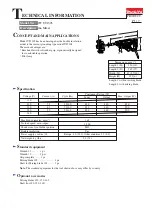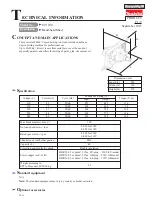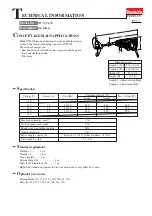
37
pair of Leslie speakers or keying a gated set of
reindeer bells with the snare signal.
The Mackie
8
•Bus consoles can’t give you the
infinite number of channels you dream of, unless
you buy an infinite number of expander consoles,
but you can very easily double the number of
inputs by using the MIX-B buses.
If you are mixing off tape as we set it up a few
pages ago, you have engaged the FLIP switch to
put the tape returns into the main channel fader
and EQ. The FLIP switch also switches the Line
Input to the MIX-B circuitry, and that provides
your extra inputs. You can get an AUX Send for
the extras using the SOURCE switch in the AUX
Send 3/4/5/6 area, and you can SPLIT the EQ if
you need to.
Check over in the MIX-B/MONITOR section
above the Sub meters and you’ll see the MIX-B
TO L/R MIX ASSIGN button, which will bring all
your MIX-B inputs back into the main mix. Voila!
Twice as many inputs!
Monitoring and Levels
Check your speakers and amplifiers to be sure
that they’re balanced left-to-right and mounted
symmetrically to your mixing position. A 2dB
shift in monitor balance will produce a 2dB shift
in the opposite direction in your mix.
Also, check your speaker polarity (sometimes
inaccurately called phase). This is a basic thing
we all know about, but it’s amazing the times
we’ve found studio speakers (especially near-
field monitors, which are often plugged and
unplugged regularly) connected with opposing
polarity. You should train your ears to notice out-
of-polarity conditions instantly. It’s easy to hear
(to us it sounds like a combination of not hear-
ing enough bass and feeling like our eyes are
slightly crossed), and getting polarity right will
save you much grief in mixing.
Remember that you need to mix so that your
music or program sounds good on anybody’s sys-
tem. Be sure you have some real-world monitor
speakers in addition to the monitors you like so
well, and check back and forth frequently. See
Section 2 (“Studio Output”), for details on how
to use two sets of control room monitors. Check
at different monitoring levels, too. A mix that
sounds great loud will not necessarily sound
good at low volume. Listen at a barely audible
level from time to time. You should still be able
to hear the essential pieces of your mix.
Also, check your stereo mixes in mono regu-
larly during your mix. Much television and radio
is still heard in mono, and your mix has to sound
its best both ways.
Take a hint from the film mixers and set your
dialog or lead vocals to about 85dB/c at the mix-
ing position. This is a moderate, normal volume;
not quiet but definitely not thundering. If you
have a sound pressure meter available you can
take a measurement to get a feel for how loud
85dB is. If you don’t, run down to Radio Shack
and say: “
I want #33-2050 or #32-2055. Here’s
$31.99 or $59.99 plus applicable taxes.
” Every
set of self-respecting ears should own one.
This monitoring volume will keep you honest,
and keep your mixes balanced for playback.
Sure, listen at very low levels, too, and crank it
from time to time to remember why you’re in this
line of work, but stay at the moderate 85dB/c
setting most of the time. You will save your hear-
ing and also make better mixes.
A Word About Automation
There is an optional MIDI automated mixing
capability that will be available for the Mackie
8•Bus Series Consoles, so we won’t talk about
automated mixing here. That’s in the manual
that comes with the automation components.
For those of you without automation, there is
hope. Billions and billions of great mixes have
been done on non-automated consoles. Here are
a few tips:
• Use subgroups, discussed earlier.
• “Mult” tracks that need drastic EQ or reverb
changes to two channels, and alternate
between them with the MUTE switches.
(
Multing
means connecting one output to
two or more inputs by simply paralleling the
connections. Some patch bays have paralleled
mult strips available. You can also make mult
boxes or just use “Y” adapters. Note: Never
mult two or more outputs into one input.
That’s what mixers are for. Only mult one
output into two or more inputs. See Appendix
A: Connections.)
• Enlist several sets of hands.
• And last, most terrifying, but most powerful
and effective: edit between sections of your
mix. It would be wise to make two passes of
your mix before you chop up your only one.
If you’ve been wildly editing mixes for years
and years, you know what we’re talking about. If
not, learn to do it. Whether you do it digitally or
you use a razor blade, you can fix that tiny detail
in an otherwise perfect mix; you can mix a com-
plicated track in sections rather than like a
marathon; you can go from 200 instruments to a
single whispered vocal and back again in a heart-
beat; you can even fix a mix weeks later without
losing the original magic—you just remix the one
chorus that needs fixing and cut it in.
RECORDING
Содержание 8-submaster mixer
Страница 21: ...19 THIS PAGE LEFT BLANK INTENTIONALLY...
Страница 40: ...38 THIS PAGE LEFT BLANK INTENTIONALLY...
Страница 65: ...63 THIS PAGE LEFT BLANK INTENTIONALLY...
















































